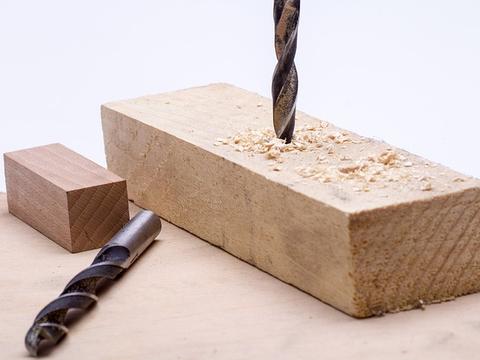
There are certain things that ruffle the feathers of virtually every experienced woodworker, and splitting boards have to top the list. You need to join wood to complete almost any project, and drilling holes and using screws often causes a split in the planks you’re working on. If you’re looking for ways to eliminate material loss and the time and frustration of having to stop a project in progress to replace components, consider the following tips on how to get boards to stop splitting.
Ways To Prevent Wood Splitting:
- Use the right wood: Cheap wood or types that aren’t suited for the application are far more likely to split. Choose quality materials and make sure the wood has been stored properly and kept away from excessive moisture. Wet or warped lumber is a common cause of splitting.
- Watch your screw placement: Where you drill your pilot holes is a critical aspect of building sturdy structures as well as keeping the wood from splitting. It’s especially important not to place screws too close to the ends of the plank. A rule of thumb is to drill at least 1/2″ in from the end.
- Use the right screws: A single trip to the hardware store will confirm just how many different types of screws there are for woodworking. Some are for joining furniture parts and mounting hardware while others are best for working with solid wood or attaching threads. If you want to stop wood from splitting, be sure you choose screws of the right size and attributes for your particular applications.
- Don’t sink screws too deep: Most woodworkers have meticulous attention to detail and are trained to make sure screws are sunk into the woods securely. However, in your quest for perfection, it’s possible to drive the screw in too deep and cause the grains to weaken and break down. Never sinking screws more than 1/16″ deep into the surface is an efficient way to get boards to stop splitting.
- Choose bolts for hinges: For projects that require joining wood with hinges, such as cabinets and chests, it’s safer to use bolts to make the attachments. Screw-in hinges move and pull away from the wood when the lid or door opens and closes. Bolts will hold the attachment tight and prevent the boards from splitting.
- Lubricate the screw: Driving screws into wood causes friction and fracturing that can lead to more excessive damage. If you’re worried about splitting or working with a thin piece of wood, prepping the screw with paraffin wax is an effective preventive measure.
If you’re serious about woodworking and looking for high-quality products to help you complete projects successfully, visit LUXITE Saw today.

